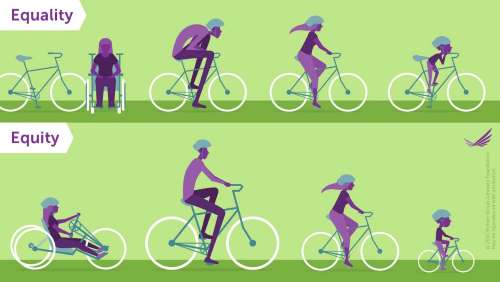Health Equity
Health equity
What is health equity?

Health equity is a state where all persons, regardless of race, creed, income, sexual orientation, gender identity, age or ability have the opportunity to reach their full health potential without the limits of structural barriers.
Equality means that everyone is provided the same things in order to live happy, healthy lives. Equity, on the other hand, means that we address structural barriers to achieve health, recognizing that some groups or people are starting from a different place because of inequitable policies or systems.
What makes us healthy?
Minnesota, on average, ranks among the healthiest states in the nation. But those averages do not tell the whole story. Minnesota has some of the largest health disparities in the country between whites and people of color and American Indians.
There are also health disparities for other communities, like those located in rural areas; low-income communities; lesbian, gay, bisexual, transgender and queer (LGBTQ) communities; and disability communities. Communities may be impacted by health inequities particularly when these identities intersect.
The common belief is that good health is due to quality medical care and personal choices, but the reality is that social and economic structural factors are major contributors to overall health.
These factors include:
- Education
- Income
- Racial discrimination
- Transportation
- Community social status
- Housing
It is not surprising that Minnesota has some of the worst health disparities in the country, because it has significant inequalities in areas such as income, education and home ownership.
Learn more about creating health equity in Minnesota and read the Minnesota statewide health assessment.
What indicators of health equity can I learn about here?
These charts illustrate differences in health outcomes between geographies with a health equity lens. Differences across neighborhood or county poverty levels are one example of health inequities in Minnesota. We are exploring other indicators of health inequities, like health insurance coverage and urban-rural disparities, and how they overlap with health outcomes like childhood asthma and lead exposure. We will update this page as new information becomes available. Tell us what data you would like to see about health inequities.
Exploring health inequities in a standardized way (for example, the same poverty categories are applied to a range of indicators) provides a starting place to better understand the cumulative impact and how to act to achieve change.
Learn more about the Center for Health Equity at MDH.
Related Links
CDC Social Vulnerability Index